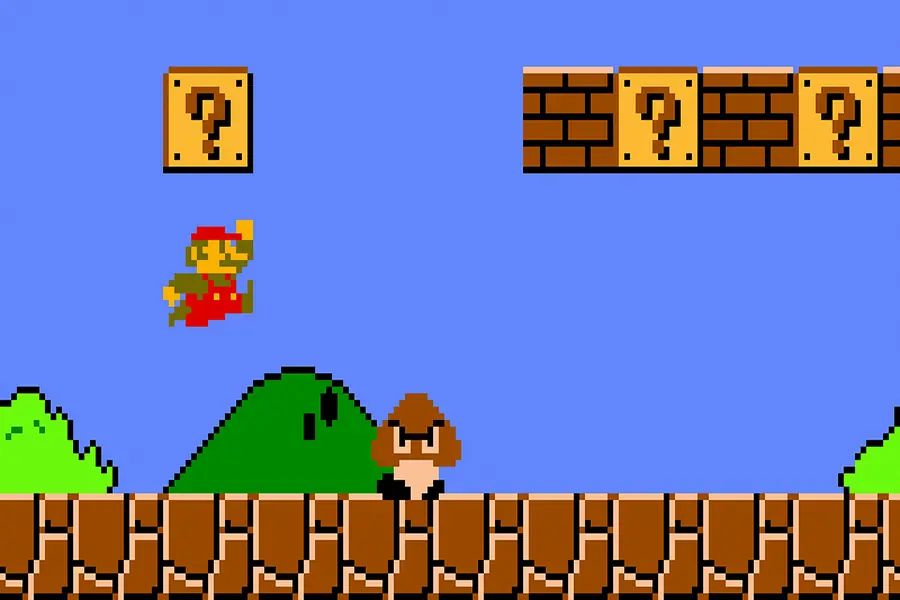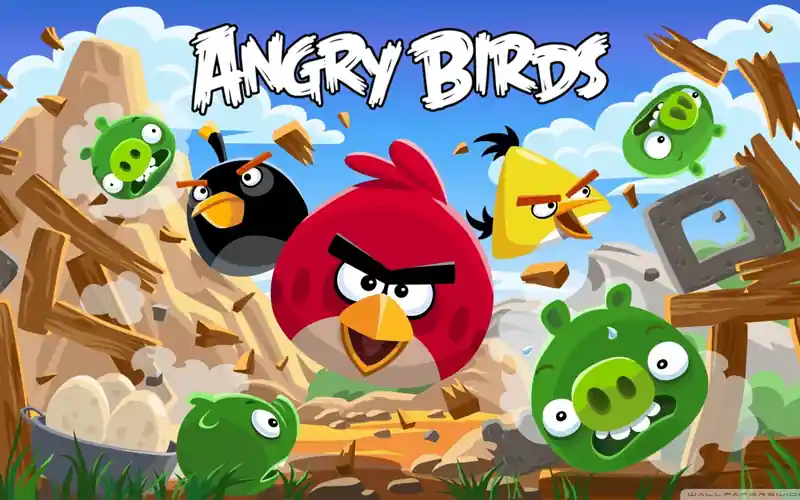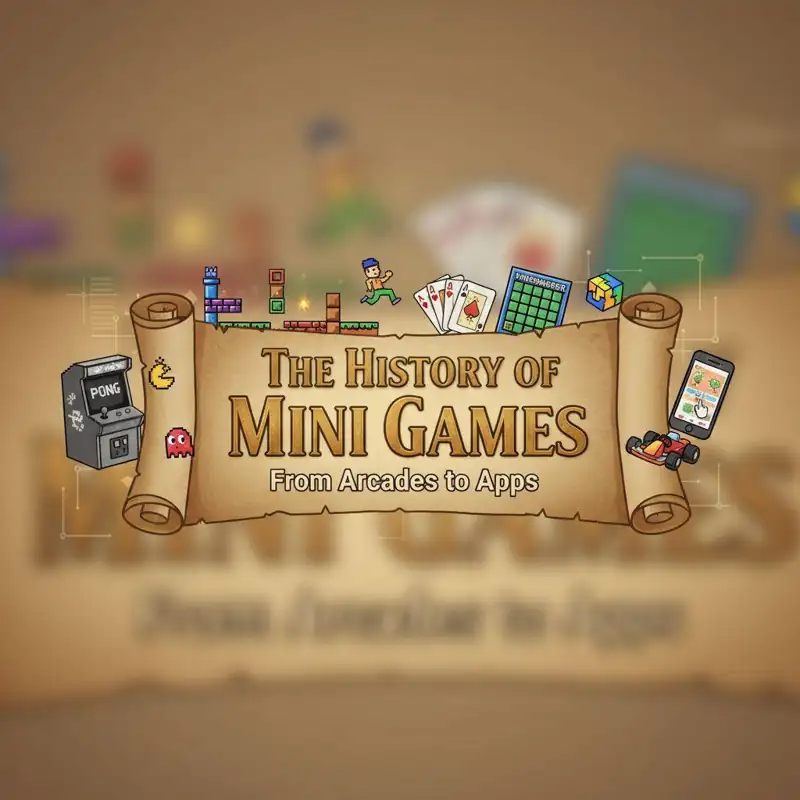Mini games have become an integral part of digital entertainment, offering quick, accessible fun for players of all ages. But their history stretches far beyond today’s casual mobile hits. From simple arcade experiments to immersive mobile experiences, mini games have evolved alongside technology and culture, shaping the way we play and interact with digital worlds.
The Dawn of Video Games (1970s)
The history of mini games can be traced back to the 1970s, when video games were still in their infancy. In 1972, Nolan Bushnell founded Atari and released Pong, a simple simulation of table tennis. With minimal graphics and intuitive controls, Pong quickly became a global phenomenon and marked a milestone in the video game industry. Its success demonstrated the commercial potential of video games and laid the foundation for future development. By employing a simple “paddle-and-ball” mechanic, it showcased the possibilities of human-computer interaction and sparked widespread public interest in electronic entertainment.

Following closely, in 1978, Japan’s Taito released Space Invaders, taking mini games to new heights. Introducing a scoring system and progressively speeding enemies, the game increased challenge and immersion. Its success fueled the global arcade craze, particularly in the United States and Europe, as young players flocked to arcades for this novel form of entertainment. Meanwhile, home consoles began emerging. In 1980, Namco launched Pac-Man, whose cute protagonist and maze-chase gameplay attracted a wide female audience, making it one of the first video game characters with significant social impact.

Another breakthrough was Nintendo’s Donkey Kong (1981), designed by Shigeru Miyamoto, which introduced the “Jumpman” character, the precursor to Mario. These early mini games were technologically simple, but their innovative gameplay and high playability established the basic paradigms of modern video games. They provided short bursts of entertainment while inspiring imagination and creativity in interactive digital experiences.
The Rise of Home Consoles (Mid-1980s to Early 1990s)
By the mid-1980s, home consoles had entered their golden age. In 1983, Nintendo launched the Family Computer (Famicom), known internationally as the Nintendo Entertainment System (NES). This console revolutionized gaming with stable hardware and a strict third-party developer approval system, preventing the market collapse seen in North America during the Atari era.
The NES era saw the release of iconic mini games, including:
- Super Mario Bros. (1985) – A platformer with imaginative worlds and precise controls.
- The Legend of Zelda (1986) – Introduced nonlinear exploration and item-based puzzles.
- Tetris (1984) – A simple yet infinitely replayable puzzle game, now a classic example of psychological “flow.”

Meanwhile, Sega entered the competition with the Master System (1988) and Mega Drive/Genesis (1990). Sonic the Hedgehog (1991) emphasized speed as the core gameplay, contrasting Mario’s exploration-based style and establishing another major IP. Other notable systems, such as NEC’s PC Engine and SNK’s Neo Geo, contributed innovations in sound and arcade-quality graphics, appealing to hardcore gamers.
These home console mini games advanced not only technology but also narrative, music, and visual style. Families gathered around TVs to take turns playing, creating shared memories and accelerating the maturation of the video game industry.
The Internet Era and Mobile Gaming Explosion (2000s)
The 21st century brought widespread internet access, fundamentally transforming how mini games were played and shared. In the early 2000s, browser-based Flash games became popular, allowing developers to create interactive games playable without installation. Early prototypes of Plants vs. Zombies, Farm Heroes, and Angry Birds emerged on these platforms. Websites like Newgrounds and Miniclip nurtured countless creative works, including Alien Hominid and Alien Swarm, small yet artistically unique games that gained global recognition.

In 2007, Apple released the iPhone, followed by the App Store in 2008, officially ushering in the mobile gaming era. Touchscreens enabled a new interaction paradigm. In 2009, Finland’s Rovio launched Angry Birds, a simple slingshot physics game with charming visuals and progressive levels, perfectly suited for short, on-the-go gameplay. Its massive success spawned movies, animations, and merchandise, turning it into a cultural phenomenon. In 2013, Supercell released Candy Crush Saga, cementing match-three games’ popularity with social features and life systems that boosted user engagement.
Nintendo continued innovation in handhelds. The Nintendo DS (2004), with dual screens and a stylus, supported casual games like Brain Age and Animal Crossing, attracting non-traditional players. In 2016, Niantic’s Pokémon GO combined augmented reality (AR) with geolocation, merging virtual gameplay with real-world exploration, sparking a global craze.
These mobile mini games reshaped the business model—from one-time purchases to freemium models with in-app purchases—and made gaming a pervasive part of everyday life.
Indie Revival and Cultural Impact (2010s–Present)
The 2010s saw a surge in indie games, fueled by accessible development tools and digital distribution platforms like Steam and itch.io. This movement allowed small teams and solo developers to release mini games to a global audience.
- Minecraft (2009) by Markus Persson started as a simple sandbox prototype, but its limitless creative potential made it a global sensation.
- Indie titles like Braid (2008), FEZ (2012), and Celeste (2018) used time manipulation, visual puzzles, and emotional storytelling to redefine what mini games could convey. Celeste, for example, used mountain climbing as a metaphor for overcoming depression, earning critical acclaim as a work of art.

Mini games also significantly shaped popular culture and social interaction. Platforms like Twitch and YouTube made games like Fall Guys: Ultimate Knockout (2020) social phenomena. Among Us (2018) became a pandemic-era hit, encouraging remote communication and teamwork, even used for online team-building and educational purposes.
From the clinking coins of arcade halls to the swipes of mobile screens, the history of mini games reflects both technological progress and humanity’s desire for play. With their compact, engaging design, mini games capture the spirit of their era, inspiring creativity and connecting players across generations. Their evolution shows that even the simplest games can leave a lasting cultural and social impact, proving that fun knows no boundaries.






